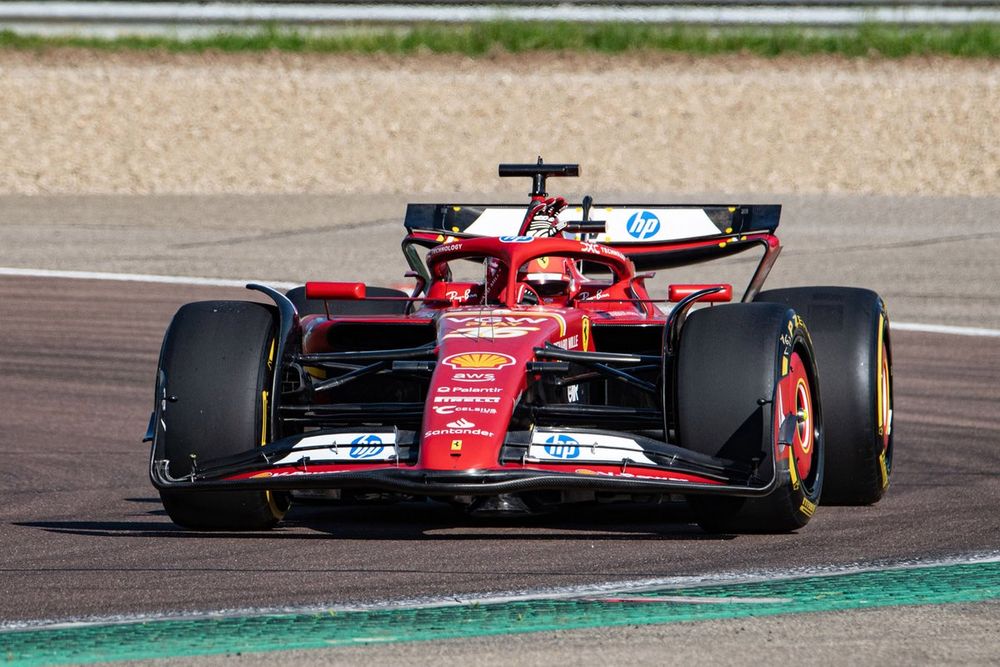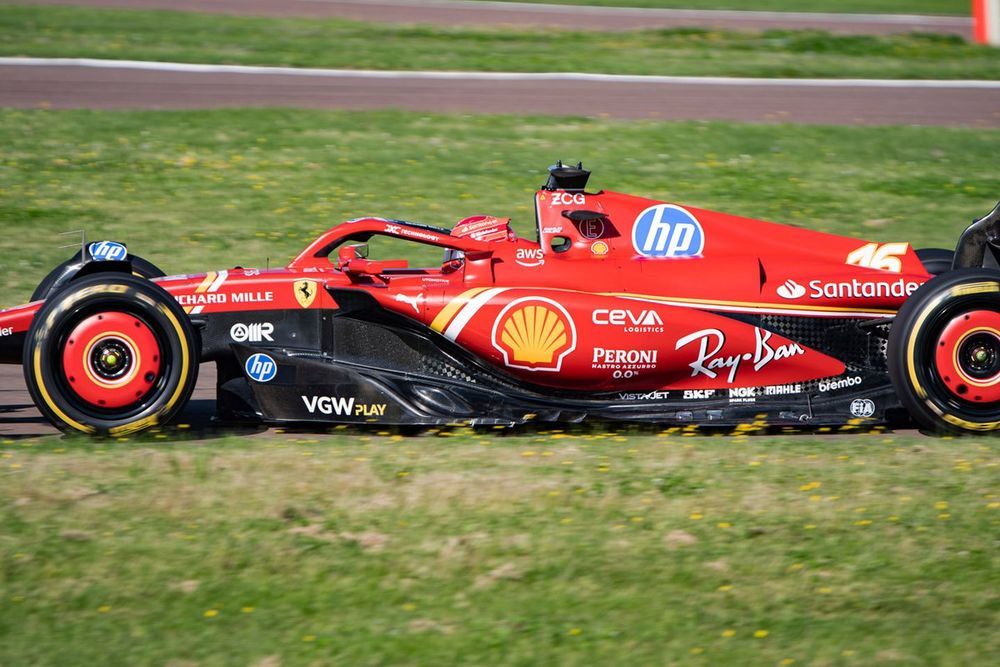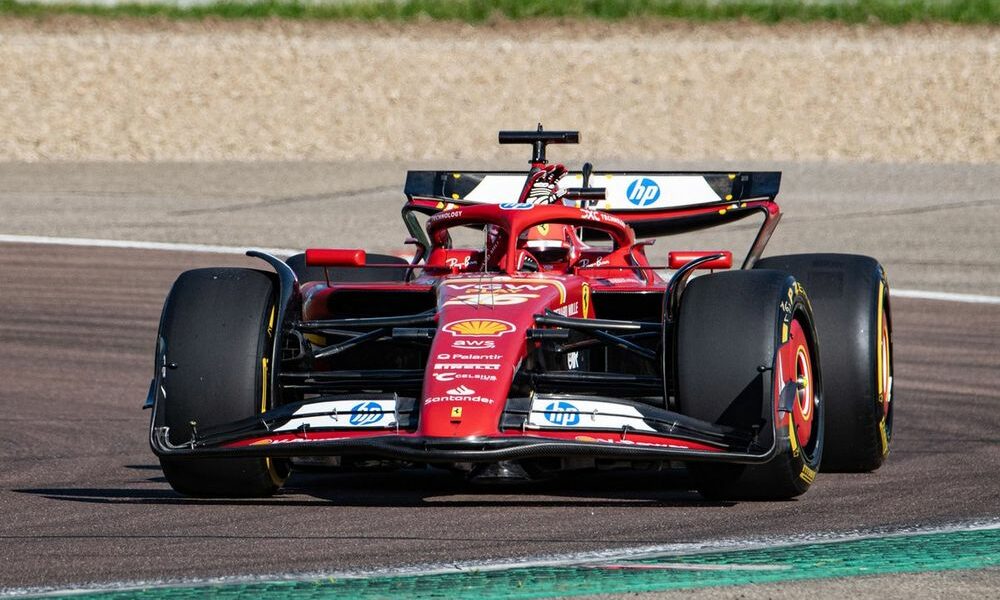Centred around a change in philosophy for the sidepod and engine cover bodywork, the rest of the SF-24 will also undergo a transformation, as the team looks for ways to apply pressure on Red Bull and stem the flow of the threat now posed by a resurgent McLaren package.
Ferrari, having moved to the underbite sidepod inlet at the start of the season, is now sporting an overbite arrangement, similar to the layout we’ve seen Red Bull pursue in 2024. However, while Red Bull has been able to minimise the size of their horizontal inlet, Ferrari’s solution is a little more expansive.
Meanwhile, the vertical bypass duct beside the chassis has been merged with the main inlet to form one larger inlet, similar to the arrangement seen on this year’s Alpine and Mercedes.
The upshot of this is the removal of the bypass duct’s outlet beside the rear leg of the halo and a change to the layout of the winglet housed here, as a cobra-shaped vane now presides over the region.
The outboard wing mirror stalk has also been extended to help condition the airflow along the upper surface of the sidepod bodywork.

Charles Leclerc, Ferrari SF-24
Photo by: Davide Cavazza
The overall shape of the sidepod’s bodywork has also been reprofiled, with a more generous undercut now present that has allowed Ferrari’s designers to rework the shape of the sidepod’s flank and adjust its waistline cut to better work with the floor alongside.
The sheer magnitude of these external changes will have undoubtedly required the team to have repackaged the SF-24’s internals too, with the radiators, coolers and other power unit ancillaries being moved and/or entirely redesigned to fit their new home.
As a consequence, the engine cover has also been fettled, with the louvred panel previously situated on the shelf-like section of bodywork exchanged for a larger, single outlet in the middle of the assembly, while the rear section is pinched in to create room for the heat to be rejected.

Charles Leclerc, Ferrari SF-24
Photo by: Davide Cavazza
Ferrari might well have been able to drip-feed some of these components onto the car in China and Miami but the team knows that brings with it the risk of the sprint weekend format and the limited testing that can be done during those events.
Opting to deliver this entire update package at Imola should therefore represent a much larger step forward for Ferrari, as it will have more time to assess and understand its impact.
This should also set the team in good stead for the next phase of the season, providing it has a good correlation between the real-world behaviour of these new parts and what was predicted by its simulation tools.

Charles Leclerc, Ferrari SF-24
Photo by: Davide Cavazza

